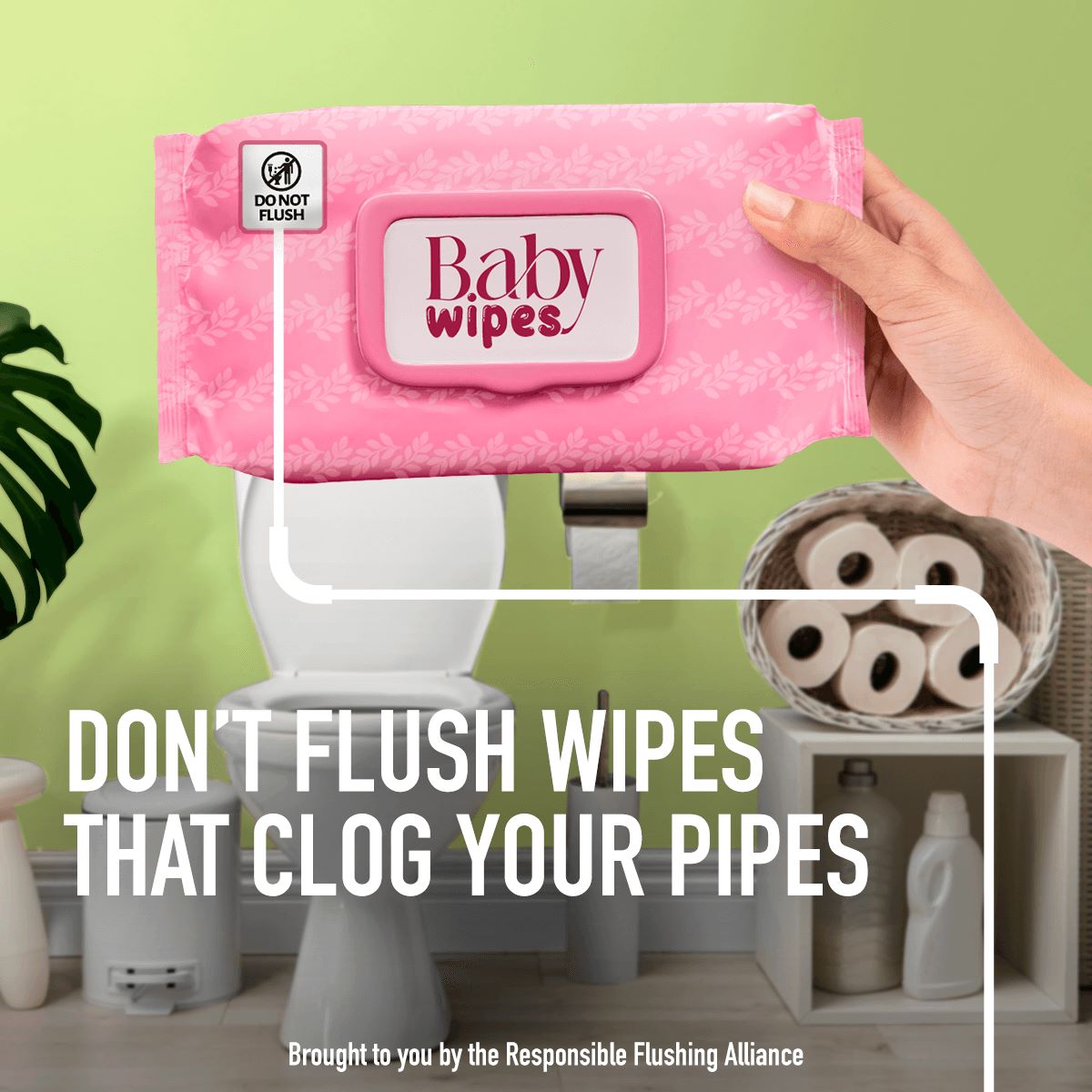
A PSA from the Responsible Flushing Alliance
On July 2nd, the Responsible Flushing Alliance (RFA) officially kicks off the expanded annual observance of #FlushSmartMonth. Flush Smart Day was introduced two years ago on July 1, but as RFA is picking up speed and increasing the creativity and reach of its educational activations, Flush Smart Day is now Flush Smart Month! A full month focused on the importance of responsible flushing and the vital role of education.
The Flush Smart Month mission is to increase awareness of the “Do Not Flush” symbol on non-flushable wipes packaging and consumer education efforts to help Americans protect their homes, community wastewater systems, and pipes infrastructure from unnecessary fatbergs and clogs.

Detective Drains and his partner, a real-life singing and talking toilet named Mel (pictured), are on the case, solving Crimes of Flushing with the Responsible Flushing Alliance for #FlushSmart Month.
At VidCon, RFA encouraged attendees to help solve crimes of flushing by assisting Detective Vincent Drains and his sidekick, Mel, a singing and talking toilet. They reminded everyone to always look for the “Do Not Flush” symbol found on non-flushable wipes — such as baby wipes, cleaning wipes, and makeup removal wipes – and if the symbol is on the package, that wipe should not be flushed. They also explained the differences between flushable and non-flushable wipes. For more check out http://www.flushsmart.org/toilet-crimes.
RFA officially launched the #FlushSmart campaign in 2022 and has since reached millions of consumers with education about proper flushing and become an important player in the effort to protect our wastewater systems, environment, and communities. Consumer research shows increasing flushing awareness with 90% of respondents indicating that they are at least somewhat knowledgeable about what can be flushed safely in 2023.
Flush Smart Month Toolkit:

When items that shouldn’t be flushed—such as non-flushable wipes with the “Do Not Flush” label—go down the toilet, they can congeal with fats, oils, and grease (FOGs) to create concrete-like masses known as fatbergs. These clogs can cause problems for homeowners and communities at large.
“With about 90% of wipes sold in the U.S. being non-flushable, it is important that people always check the disposal instructions and look for the ‘Do Not Flush’ symbol. If they see it, that wipe goes in the trash, never the toilet,” Wyss said. “The other 10% of wipes sold are flushable wipes. Those are made with short, plant-based fibers that break down in water similar to toilet paper and are specifically designed and tested for flushability.”
On average, it costs about $300 to $450 to repair the damage to home plumbing systems caused by clogs. And if it requires a whole house re-pipe, the average cost can range from $4,000 to $15,000. When it comes to municipalities, costs can vary—but estimates show that local public agencies throughout the U.S. (and the ratepayers they represent) spend more than $440 million each year to repair wastewater treatment equipment and respond to sewer overflows caused by improper flushing of non-flushable wet wipes.
Sewage leaks and spills caused by clogs can also potentially contaminate our environment and water supply. Especially in times of drought, maintaining proper flushing habits will help protect our critical infrastructure and our communities’ precious groundwater and other freshwater sources.
States including California, Washington, Oregon, Illinois, Colorado, Michigan, and New Jersey have enacted Proper Wet Wipes Labelling Laws.
Now consumers across the country can find the “Do Not Flush” symbol on non-flushable wipes, including baby wipes, household cleaning wipes, and facial wipes, to name a few. Wipes manufacturers support RFA’s consumer education efforts, known as the #FlushSmart campaign, to help promote the symbol and shed light on this important but often overlooked topic.
If you’re interested in learning more about the #FlushSmart campaign or the Responsible Flushing Alliance, visit http://www.flushsmart.org.
The Responsible Flushing Alliance (RFA) is a 501(c)(6) non-profit organization dedicated to national consumer education programs focused on what not to flush. RFA’s goal is to change consumer behavior to help reduce damage to our nation’s sewage systems caused by objects and materials not designed to be flushed.